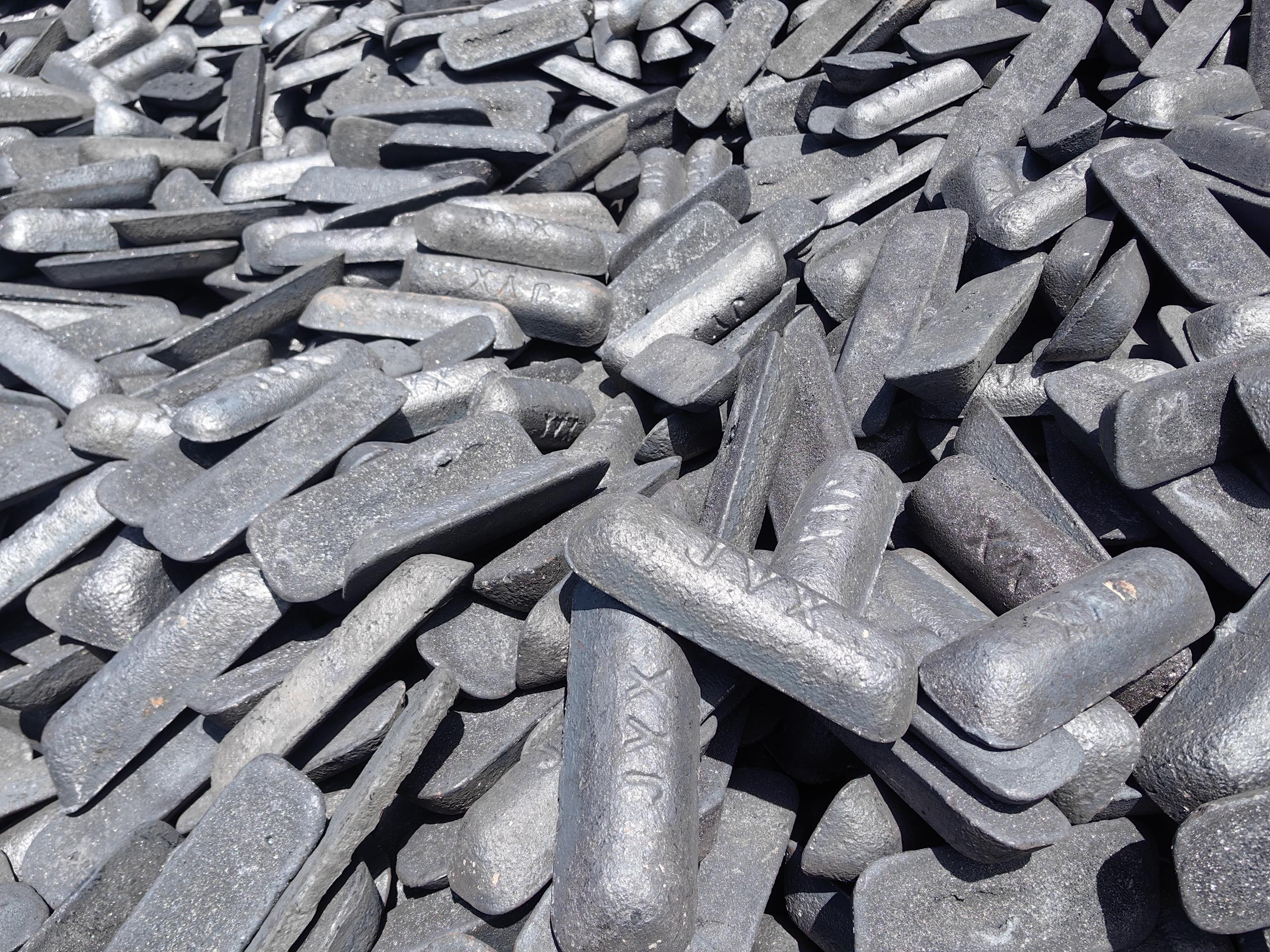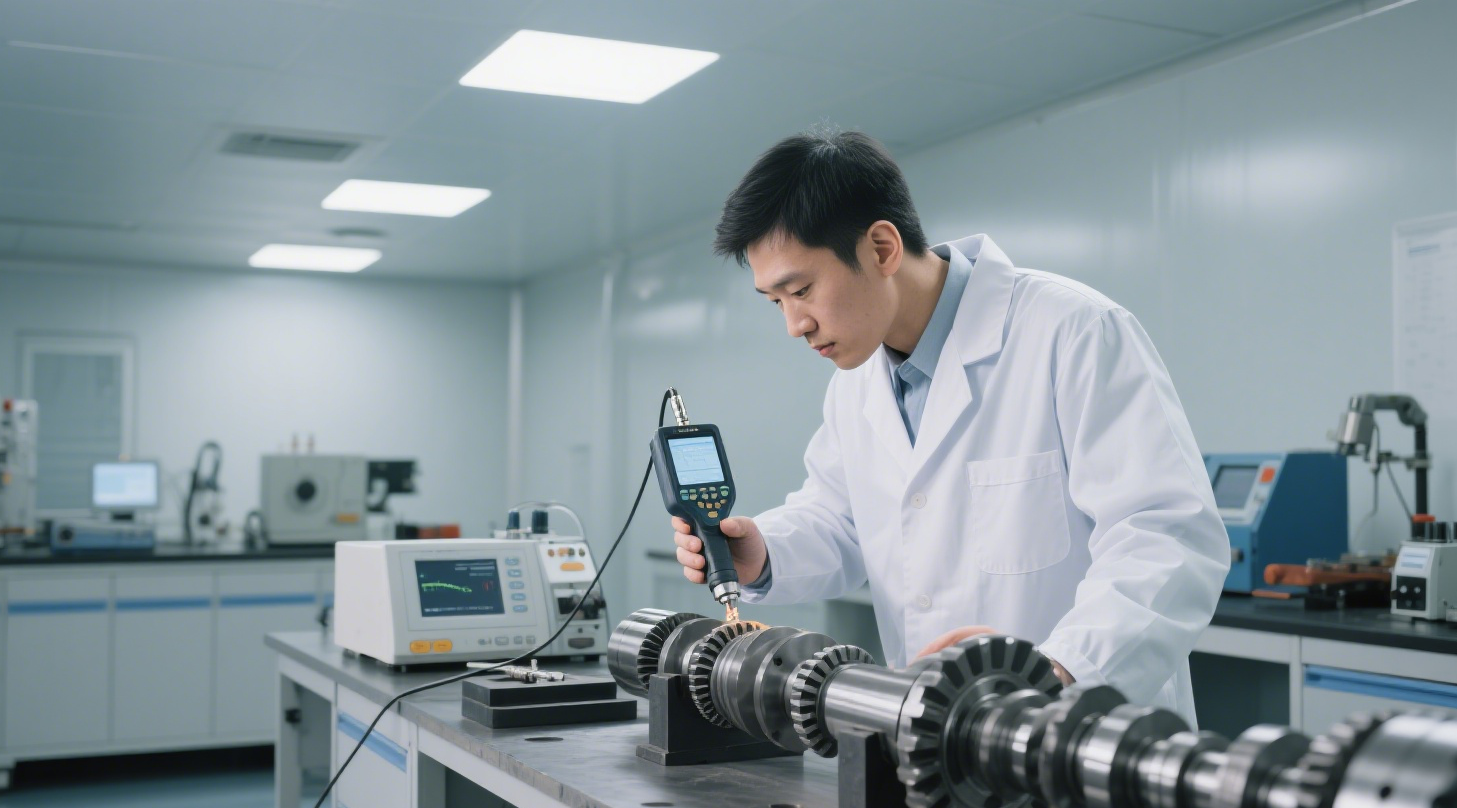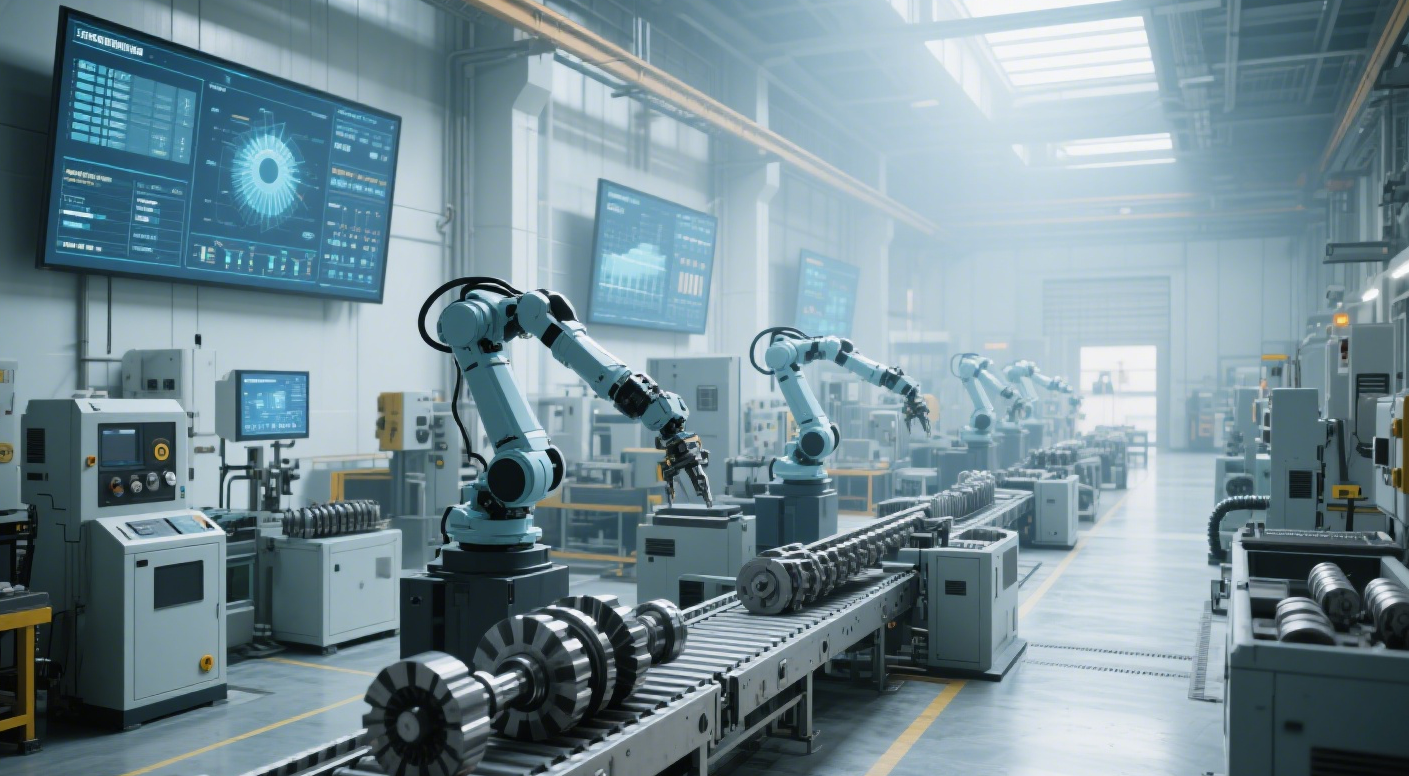Crankshaft making process
2025-06-20 09:03:20 hits:0
As the "heart" of power equipment, the engine relies on the crankshaft as a critical component to convert the reciprocating linear motion of pistons into rotational motion. The crankshaft casting process is the core technology that imparts performance to this vital part. A comprehensive understanding of this technology requires a systematic analysis of process flows, material selection, quality control, and development trends—each link embodying the deep integration of materials science and manufacturing engineering.

I. Core Processes of Crankshaft Casting
(1) Melting Process
As the starting point of casting, the melting process directly determines the basic properties of the crankshaft material. The
key objective is to obtain high-temperature, low-sulfur pure molten iron, which serves as the foundation for producing high-quality ductile iron crankshafts. Domestic melting technology has evolved from traditional cupola furnaces to a dual-stage pre-desulfurization process: "cupola melting + out-of-furnace desulfurization + induction furnace temperature adjustment and composition control" 1. Advanced detection tools like vacuum direct-reading spectrometers act as "intelligent monitoring systems" for molten iron quality, real-time monitoring of its composition to ensure strict compliance with quality standards.
(2) Molding Process
Following melting, the molding process begins, a critical step in imparting the geometric shape to the crankshaft. The air impact molding process has become the preferred technology for multi-throw complex crankshafts due to its significant advantage of zero rebound deformation in sand molds. In terms of industry application, some leading domestic enterprises have introduced related equipment from casting technology powerhouses like Germany and Italy. However, due to cost constraints, the introduction of complete production lines remains rare. Wendeng Tengren Crankshaft Co., Ltd. stands as a typical representative, with its technology application holding important industry reference value 2.
(3) Pouring Process
After molding, the pouring process becomes the bridge connecting design to physical realization. The key of this process lies in controlling the smooth and rapid filling of the mold by molten metal to avoid defects such as insufficient pouring and cold shuts. Meanwhile, a reasonable gating system must be designed through rigorous engineering calculations based on the specific structure of the crankshaft, ensuring the flow state of molten metal in the mold meets expectations and laying the foundation for subsequent forming quality 3.
(4) Cooling and Demolding
Upon completion of pouring, the cooling and demolding stage is crucial to the final performance of the crankshaft. Cooling rate is the control focus of this link, directly affecting crankshaft quality: excessively fast cooling easily leads to stress concentration and subsequent cracking; excessively slow cooling reduces production efficiency. Therefore, it is necessary to accurately control the cooling process based on the crankshaft's material and dimensions, applying professional heat conduction theory, and only proceeding to subsequent operations when appropriate demolding conditions are met 4.
II. Material Selection for Crankshaft Casting
(1) Ductile Iron
Among crankshaft casting materials, ductile iron dominates due to its outstanding comprehensive performance. It boasts high fatigue strength, with an elastic modulus twice that of gray cast iron. When alloying elements such as copper and molybdenum are added, its performance can approach that of heat-treated steel while eliminating the need for heat treatment and offering better casting performance than steel 5. Based on these advantages, most crankshafts on the market are made of ductile iron, commonly using grades such as QT600-3, QT700-2, and higher strength levels, with these grade selections strictly following material performance standards in the mechanical engineering field.

(2) Forged Steel
Despite the widespread application of ductile iron, forged steel becomes the preferred material in certain special occasions where extremely high crankshaft performance is required. Forged steel undergoes special forging processes to make its internal structure denser, enabling it to meet the usage requirements under extreme working conditions, reflecting the precise matching of material selection to working condition demands 6.
III. Quality Control System for Crankshaft Casting
(1) Process Monitoring
To ensure the stability of crankshaft quality, establishing a full-process monitoring system is indispensable. From raw material inspection to each link of melting, molding, pouring, and cooling, key parameters must be strictly monitored. For example, closely tracking molten iron temperature and composition during melting, and accurately controlling sand mold precision and strength during molding. This comprehensive monitoring mode is like setting up multiple "quality checkpoints" for the casting process, effectively guaranteeing process consistency and reliability 7.
(2) Defect Detection
Even with strict process monitoring, defect detection remains a vital part of quality control. A variety of detection methods are employed to conduct a comprehensive "physical examination" of the crankshaft: visual inspection can intuitively identify surface defects such as sand holes, air holes, and cracks; dimensional inspection uses high-precision measuring tools to ensure all crankshaft dimensions meet design requirements; non-destructive testing technologies such as ultrasonic and magnetic particle testing can penetrate the interior of the crankshaft to detect hidden defects. The comprehensive application of these detection methods constructs a complete quality assurance system 8.

IV. Development Trends of Crankshaft Casting Process
(1) Intelligence and Automation
With the continuous advancement of industrial technology, intelligence and automation have become important development directions for crankshaft casting processes. The popularization of automated melting, molding, pouring equipment, and intelligent detection systems has realized fully automated production from raw materials to finished products. Meanwhile, the introduction of artificial intelligence technology to analyze and optimize massive process data can continuously enhance process levels and product quality stability, which is highly consistent with the development trend of intelligent manufacturing 9.
(2) Green and Environment-friendly
Against the backdrop of growing global environmental awareness, the concept of green and environment-friendly has deeply influenced the crankshaft casting process. On the one hand, energy-saving and environmental-friendly equipment such as medium-frequency induction furnaces are adopted to reduce energy consumption and exhaust emissions; on the other hand, efforts are made to develop and use environment-friendly molding materials to minimize environmental pollution. In addition, strengthening the treatment and recycling of waste such as slag and wastewater has constructed a sustainable casting production model, reflecting the industry's sense of responsibility for environmental protection 10.
(3) High Performance and Lightweight
To meet the development needs of industries such as automotive and aerospace, the crankshaft casting process is moving towards high performance and lightweight. In terms of performance improvement, advanced alloying technologies and precise process optimization are used to continuously enhance the strength, wear resistance, and fatigue resistance of crankshafts; in terms of material innovation, the application of lightweight materials such as high-strength aluminum alloys and carbon fiber composites is actively explored to effectively reduce engine weight and improve energy utilization. These technological innovations are closely centered on the actual needs of the industry, demonstrating the clear direction of process development 11.

The progress of crankshaft casting technology has always resonated with the development of power equipment industries. From the optimization of material properties to the innovation of process technologies, every breakthrough embodies the wisdom of engineering and technical personnel. In the future, with the continuous innovation of technology, this core manufacturing technology will continue to make new breakthroughs in the directions of intelligence, greenness, and high performance, providing more reliable and efficient support for power demands in various fields, and its development prospects are worthy of continuous attention and expectation from the industry. For detailed information on specific crankshaft products, please click Crankshaft Product Page for viewing.
Reference Sources
[1] Foundry Institution of Chinese Mechanical Engineering Society. Casting Handbook[M]. China Machine Press, 2019. Link
[2] Wendeng Tengren Crankshaft Co., Ltd. Official Website. Company Technology Introduction[EB/OL]. Link
[3] Zhang Hongbo, et al. Foundry Technology[M]. Tsinghua University Press, 2020. Link
[4] Wang Xiaotian. Principles of Metal Solidification[M]. Science Press, 2018. Link
[5] GB/T 1348-2019, Ductile Iron Castings[S]. China Standards Press, 2019. Link
[6] Editorial Board of Mechanical Design Handbook. Mechanical Design Handbook[M]. China Machine Press, 2016. Link
[7] Li Huailin, et al. Casting Quality Control and Testing Technology[M]. Chemical Industry Press, 2017. Link
[8] Non-Destructive Testing Standards Committee. Compilation of Non-Destructive Testing Standards[M]. China Metrology Press, 2018. Link
[9] Ministry of Industry and Information Technology. Development Plan for Intelligent Manufacturing (2016-2020)[EB/OL]. Link
[10] China Foundry Association. Green Casting Technology Roadmap[EB/OL]. Link
[11] Society of Automotive Engineers of China. Report on the Development Trend of Automotive Lightweight Technology[EB/OL]. Link

 en
en  fra
fra  de
de  ru
ru  ara
ara  gle
gle  it
it  jp
jp  kor
kor  th
th  zh
zh 


